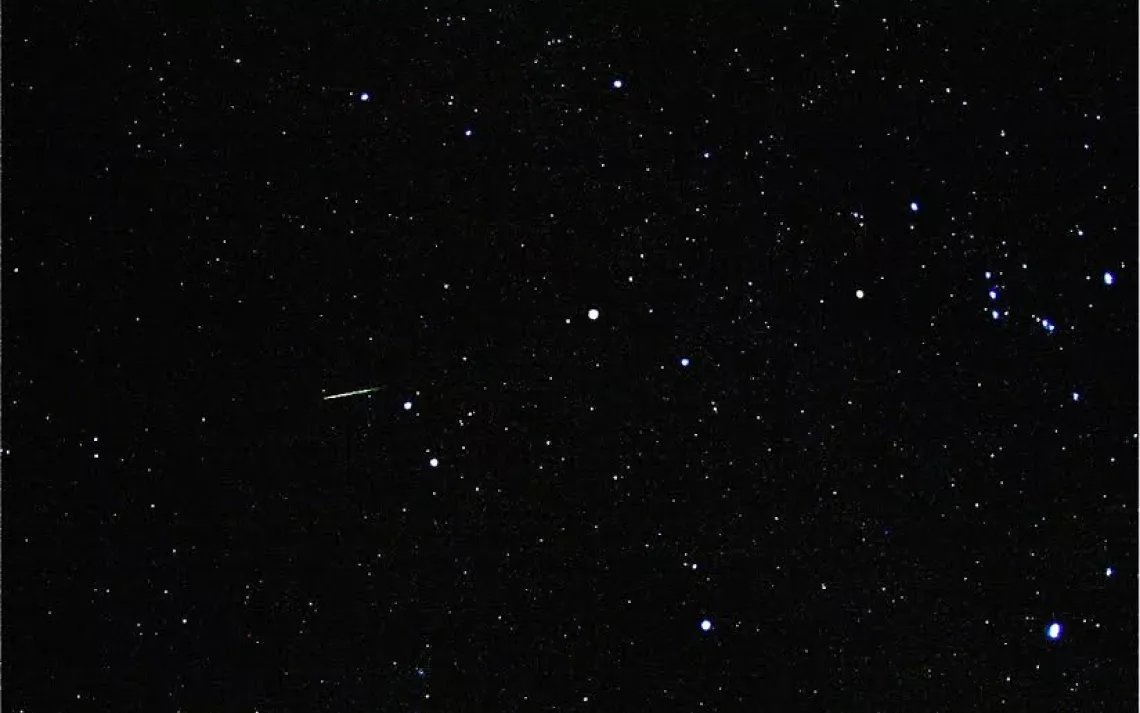4 Astronomical Highlights in October

An Orionid meteor near the Orion constellation to the right | Photo by Brocken Inaglory
The Orionid Meteor Shower
Autumn’s best meteor shower will peak overnight from October 21 to 22, but you might catch Orionid meteors streaking across the sky any night between October 2 and November 7. The dust and debris burning up in Earth’s atmosphere is left over from Halley’s Comet. Trace the paths of the meteors back to the constellation Orion to be sure that you are seeing debris from Halley and not just stray interplanetary dust. At the shower’s peak, you may see about 30 meteors per hour.
The Moon
October’s full moon, known as a Hunter’s Moon, occurs mid-month, on October 15 at 9:23 P.M. PDT (or in the Eastern Time Zone, on October 16 just after midnight). Because of this, both the beginning and end of October will have a New Moon. The first New Moon is on October 1 at 00:12 Universal Time (technically, this falls on September 30 in the U.S. time zones). The second New Moon, called a “Black Moon,” is on October 30. So on Halloween night, you may catch a sliver of the young crescent moon in the west just before it sets. Bright Venus will also be in the west, with Saturn to its upper right.
Moon Pairings
The moon will pair closely with several planets and bright stars this month, making for especially pretty photo ops. On October 3, a slender crescent moon will be near brilliant Venus, and on October 5, it will be next to Saturn. On October 7, the moon is a bit wide of Mars.
On October 18, the moon rises in the constellation Taurus—specifically in the Hyades cluster of stars. Over the course of the evening and into the morning hours, the moon will get closer and closer to the bright star Aldebaran, actually passing in front of it or just skimming by, depending on your location.
The Galaxy Next Door
Fall is the season for a meet-and-greet with our nearest spiral galaxy, Andromeda, which is barreling toward us at 266 kilometers a second—the fastest known velocity for a galaxy. It’s a part of the constellation of the same name. To find it first, locate the W shape of the nearby Cassiopeia constellation and follow the right half down to its end point. At magnitude 3.4, it can be seen without any optical aid, but it’s best to look with a telescope or binoculars first to nail down the location.
 The Magazine of The Sierra Club
The Magazine of The Sierra Club







